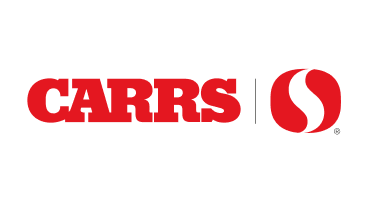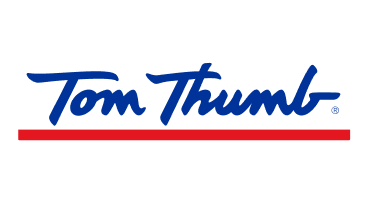6 Ways to Get More Fiber in Your Diet



Increasing your fiber intake is relatively easy. Let’s look at how much fiber you need and how to add more fiber to your diet.
Fiber is an important essential nutrient that you get from foods.[1] Unfortunately, most of us don’t get enough of it in our diets.[2]
What is fiber?
Fiber is a type of complex carbohydrate naturally found in fruits, vegetables, whole grains, legumes (beans and peas), nuts, and seeds. You get dietary fiber when you eat these plants or plant-based products.
There are 2 main types of fiber:
Insoluble fiber
Insoluble means the fiber in foods doesn’t break down.[3] It passes through your digestive system relatively intact.[4] This type of fiber adds bulk to stool, making it easier to pass and lowering your risk of constipation.[5]
Insoluble fiber helps to:
- Improve bowel health[6]
- Lower the risk of constipation and related problems like hemorrhoids[7]
- Soften and bulk up stools[8]
Soluble fiber
Soluble fiber breaks down or dissolves in water and fluids, forming a gel-like substance.[9] Healthy bacteria in your digestive system feed on this gel, improving gut health.[10]
Soluble fiber could contribute to:
- Lowering cholesterol and high blood pressure[11]
- Managing blood sugar and diabetes[12]
- Protecting your heart[13]
- Reducing fat absorption[14]
Other health benefits of fiber
Since fiber fills you up, getting enough of it can help you achieve and maintain a healthy weight.[15] You may be less likely to reach for snacks when you feel satisfied hours after a meal.
Plus, an analysis of close to 250 studies suggests that getting enough dietary fiber can reduce your risk of death from these conditions:[16]
- Colon cancer
- Heart disease
- Stroke
- Type 2 diabetes
How much fiber do you need?
How much fiber you need each day depends on your age and biological sex.
The Dietary Guidelines for Americans have the following recommended dietary allowance (RDA) for fiber:[17]
- Females 50 and younger: 25 grams
- Males 50 and younger: 38 grams
- Females older than 50: 21 grams
- Males older than 50: 30 grams
How to get more fiber in your diet: Shopping for high-fiber foods
Most Americans fall far short on fiber intake, consuming only about 10 to 15 grams of fiber each day.[18] According to the Dietary Guidelines for Americans, as many as 9 in 10 adults don’t get the daily recommended amount of dietary fiber.[19]
These steps can help you include more fiber in your meals and snacks every day.
1. Check the Nutrition Facts label
The Nutrition Facts label found on foods and drinks shows how much fiber is in each serving. If you have more than 1 serving, remember to multiply the fiber grams by the number of servings. If the food has at least 2.5 grams of fiber per serving, you’re getting at least 10% of the Daily Value for fiber.
2. Get more fruits and vegetables
Fiber intake remains largely the same whether you buy produce that’s fresh, frozen , or canned.[20] The same can’t be said for juices or sauces though, which lose fiber during the manufacturing process.[21] For instance, you’ll get more fiber (4.5 grams) from a medium-sized apple with skin than a cup of applesauce (2.7 grams).[22] And you’ll get more fiber (1.7 grams) from one raw carrot than ¼-cup of carrot juice (0.5 grams).
Stock up on these high-fiber fruits and vegetables:[23]
Food Grams of Fiber
1 cup cooked artichoke, lima beans, or green peas 9
1 cup canned pumpkin 7
1 cup fresh raspberries or blackberries 8
1 cup fresh blueberries 6
1 cup cooked Brussels sprouts or sweet potatoes 6
1 pear 5.5 to 6.5
1 cup cooked broccoli 5
1 grapefruit 5
1 apple with skin 4.5
3. Go for whole grains
Whole grains like brown rice and quinoa, as well as whole-grain products like whole-wheat bread, are higher in fiber than refined grains.[24] That’s because whole grains still have the fiber-rich outer layer of the grain, called bran, that refined grains like white flour or white rice don’t have.[25]
The U.S. Department of Agriculture’s healthy eating tool, MyPlate, recommends filling a quarter of your plate at each meal with grains, with whole grains accounting for half of them.)[26]
Consider these high-fiber, whole-grain foods:[27]
Product Grams of Fiber
½ cup ready-to-eat unsweetened high-fiber bran cereal 14
1 cup ready-to-eat shredded wheat cereal 6
3 cups plain popcorn 6
½ cup cooked bulgur or spelt 4
1 ounce whole-wheat crackers 3
1 whole-wheat tortilla 4[28]
4. Don’t overlook legumes and beans
Legumes, including beans, are excellent sources of fiber.[29] They’re also a good source of plant-based protein.[30] You can serve beans as a side dish or make them the main meal. They’re also great in soups and dips.
Put these high-fiber beans in your shopping cart:[31]
Product Grams of Fiber
½ cup cooked navy beans 10
½ cup cooked lentils 8
½ cup cooked pinto or black beans 7.5
½ cup cooked chickpeas 6
½ cup cooked kidney or white beans 6
½ cup cooked soybeans 5
5. Snack on high-fiber nuts and seeds
Certain nuts and seeds are high in fiber, making them a perfect, filling snack. You can also add nuts and seeds to salads, cereals, yogurt, and smoothies.
Higher fiber nuts and seeds include:[32]
Product Grams of Fiber
1 ounce whole pumpkin seeds 5
1 tablespoon chia seeds 4
1 ounce almonds 3.5
1 ounce sunflower seeds 3
1 tablespoon flax seeds 3
1 ounce pine nuts 3
6. Use fiber supplements to add more fiber to your diet
Fiber supplements in pills or powders may be another way to get more fiber if you just can’t hit the mark with foods. However, you won’t get the vitamins and minerals found in whole foods or juices.[33] Plus, some studies suggest that added fiber doesn’t have the same health-boosting benefits as naturally occurring fiber.[34] It’s best to choose foods that are naturally high in fiber.
In summary: How to add more fiber to your diet
Fiber is good for your gut, heart, and more. But it can also have some unwanted side effects like gas and bloating, especially if you get too much. It’s important to drink lots of water as you increase your fiber intake to keep things moving along in your digestive tract.[35] To minimize stomach upset, consider gradually increasing your fiber intake over several weeks until you’re regularly meeting the recommended dietary amount.[36]
Now that you know the benefits of fiber, you may be curious about how to make smart shopping choices. The Sincerely Health nutrition tools in the grocery app can help.
You can start by downloading the grocery app. You’ll save $10* on groceries for creating an account. Next, create a personalized Sincerely Health nutrition profile to receive 1,000 points.
Your nutrition profile allows you to:
- Set specific nutrition goals.
- Earn 10 points for items you purchase for a maximum 100 points per order (that’s 10 items at 10 points each).
Sign up for Sincerely Health and create a nutrition profile to help you get more dietary fiber today!
FAQs:
1. What foods are high in fiber?
High-fiber foods include fruits, vegetables, whole grains, legumes (beans and peas), nuts, and seeds.
2. How much fiber do you need in a day?
The Dietary Guidelines for Americans have the following recommended dietary allowance (RDA) for fiber:[37]
- Females 50 and younger: 25 grams
- Males 50 and younger: 38 grams
- Females older than 50: 21 grams
- Males older than 50: 30 grams
Download your Albertsons app on the App Store today












[1] Academy of Nutrition and Dietetics. Easy Ways to Boost Fiber in Your Diet. Last reviewed February 26, 2021. https://www.eatright.org/health/essential-nutrients/carbohydrates/easy-ways-to-boost-fiber-in-your-daily-diet#
[2] Harvard Health Publishing. Should I Be Eating More Fiber? Last reviewed February 27, 2019. https://www.health.harvard.edu/blog/should-i-be-eating-more-fiber-2019022115927#
[3] Cleveland Clinic. What’s the Difference Between Insoluble and Soluble Fiber? Last reviewed February 1, 2021. https://health.clevelandclinic.org/whats-the-difference-between-soluble-and-insoluble-fiber
[4] Cleveland Clinic. What’s the Difference Between Insoluble and Soluble Fiber? Last reviewed February 1, 2021. https://health.clevelandclinic.org/whats-the-difference-between-soluble-and-insoluble-fiber
[5] Cleveland Clinic. What’s the Difference Between Insoluble and Soluble Fiber? Last reviewed February 1, 2021. https://health.clevelandclinic.org/whats-the-difference-between-soluble-and-insoluble-fiber
[6] Cleveland Clinic. What’s the Difference Between Insoluble and Soluble Fiber? Last reviewed February 1, 2021. https://health.clevelandclinic.org/whats-the-difference-between-soluble-and-insoluble-fiber
[7] Cleveland Clinic. What’s the Difference Between Insoluble and Soluble Fiber? Last reviewed February 1, 2021. https://health.clevelandclinic.org/whats-the-difference-between-soluble-and-insoluble-fiber
[8] Cleveland Clinic. What’s the Difference Between Insoluble and Soluble Fiber? Last reviewed February 1, 2021. https://health.clevelandclinic.org/whats-the-difference-between-soluble-and-insoluble-fiber
[9] Centers for Disease Control and Prevention (CDC). Fiber: The Carb that Helps You Manage Diabetes. Last reviewed May 15, 2024. https://www.cdc.gov/diabetes/healthy-eating/fiber-helps-diabetes.html#; Cleveland Clinic. What’s the Difference Between Insoluble and Soluble Fiber? Last reviewed February 1, 2021. https://health.clevelandclinic.org/whats-the-difference-between-soluble-and-insoluble-fiber
[10] Centers for Disease Control and Prevention (CDC). Fiber: The Carb that Helps You Manage Diabetes. Last reviewed May 15, 2024. https://www.cdc.gov/diabetes/healthy-eating/fiber-helps-diabetes.html#; Cleveland Clinic. What’s the Difference Between Insoluble and Soluble Fiber? Last reviewed February 1, 2021. https://health.clevelandclinic.org/whats-the-difference-between-soluble-and-insoluble-fiber
[11] National Institutes of Health. Rough Up Your Diet. Last reviewed 2019. https://newsinhealth.nih.gov/2019/07/rough-up-your-diet
[12] Centers for Disease Control and Prevention (CDC). Fiber: The Carb that Helps You Manage Diabetes. Last reviewed May 15, 2024. https://www.cdc.gov/diabetes/healthy-eating/fiber-helps-diabetes.html#; Cleveland Clinic. What’s the Difference Between Insoluble and Soluble Fiber? Last reviewed February 1, 2021. https://health.clevelandclinic.org/whats-the-difference-between-soluble-and-insoluble-fiber
[13] Cleveland Clinic. What’s the Difference Between Insoluble and Soluble Fiber? Last reviewed February 1, 2021. https://health.clevelandclinic.org/whats-the-difference-between-soluble-and-insoluble-fiber
[14] Centers for Disease Control and Prevention (CDC). Fiber: The Carb that Helps You Manage Diabetes. Last reviewed May 15, 2024. https://www.cdc.gov/diabetes/healthy-eating/fiber-helps-diabetes.html#; Cleveland Clinic. What’s the Difference Between Insoluble and Soluble Fiber? Last reviewed February 1, 2021. https://health.clevelandclinic.org/whats-the-difference-between-soluble-and-insoluble-fiber
[15] Harvard Health Publishing. Should I Be Eating More Fiber? Last reviewed February 27, 2019. https://www.health.harvard.edu/blog/should-i-be-eating-more-fiber-2019022115927#
[16] The Lancet. Carbohydrate quality and human health: A series of systematic reviews and meta-analyses. Last reviewed January 10, 2019. https://www.thelancet.com/journals/lancet/article/PIIS0140-6736(18)31809-9/fulltext; Harvard Health Publishing. Should I Be Eating More Fiber? Last reviewed February 27, 2019. https://www.health.harvard.edu/blog/should-i-be-eating-more-fiber-2019022115927#; National Institutes of Health. Rough Up Your Diet. Last reviewed 2019. https://newsinhealth.nih.gov/2019/07/rough-up-your-diet
[17] Cleveland Clinic. What’s the Difference Between Insoluble and Soluble Fiber? Last reviewed February 1, 2021. https://health.clevelandclinic.org/whats-the-difference-between-soluble-and-insoluble-fiber; Harvard Health Publishing. Should I Be Eating More Fiber? Last reviewed February 27, 2019. https://www.health.harvard.edu/blog/should-i-be-eating-more-fiber-2019022115927#
[18] Harvard Health Publishing. Should I Be Eating More Fiber? Last reviewed February 27, 2019. https://www.health.harvard.edu/blog/should-i-be-eating-more-fiber-2019022115927#
[19] Dietary Guidelines for Americans, 2020-2025 (page 101). Last reviewed 2024.
[20] Utah State University. Last reviewed August 19, 2011. https://extension.usu.edu/archive/is-all-dietary-fiber-the-same
[21] University of Massachusetts. Fruits. https://www.umass.edu/nibble/infofile/fruit.html
[22] University of Massachusetts. Fruits. https://www.umass.edu/nibble/infofile/fruit.html; Mayo Clinic. Chart of High-Fiber Foods. Last reviewed November 23, 2023. https://www.mayoclinic.org/healthy-lifestyle/nutrition-and-healthy-eating/in-depth/high-fiber-foods/art-20050948; USDA. Applesauce, Canned, Unsweetened. Last reviewed April 1, 2019. https://fdc.nal.usda.gov/fdc-app.html#/food-details/171695/nutrients
[23] Dietary Guidelines for Americans. Food Sources of Dietary Fiber. Last reviewed. https://www.dietaryguidelines.gov/resources/2020-2025-dietary-guidelines-online-materials/food-sources-select-nutrients/food-0
[24] Oldways Whole Grains Council. What’s a Whole Grain? A Refined Grain? https://wholegrainscouncil.org/whole-grains-101/whats-whole-grain-refined-grain
[25] Oldways Whole Grains Council. What’s a Whole Grain? A Refined Grain? https://wholegrainscouncil.org/whole-grains-101/whats-whole-grain-refined-grain
[26] Oldways Whole Grains Council. How Much Whole Grain Is Enough? https://wholegrainscouncil.org/sites/default/files/atoms/files/WG_HowMuch.pdf
[27] Dietary Guidelines for Americans. Food Sources of Dietary Fiber. https://www.dietaryguidelines.gov/resources/2020-2025-dietary-guidelines-online-materials/food-sources-select-nutrients/food-0
[28] USDA. Tortillas, Ready to bake or fry, whole wheat. Last reviewed April 1, 2019. https://fdc.nal.usda.gov/food-details/174081/nutrients
[29] Mayo Clinic. Chart of High-Fiber Foods. Last reviewed November 23, 2023. https://www.mayoclinic.org/healthy-lifestyle/nutrition-and-healthy-eating/in-depth/high-fiber-foods/art-20050948
[30] USDA. Beans, Peas and Lentils. https://www.myplate.gov/eat-healthy/protein-foods/beans-peas-lentils
[31] Dietary Guidelines for Americans. Food Sources of Dietary Fiber. Last reviewed. https://www.dietaryguidelines.gov/resources/2020-2025-dietary-guidelines-online-materials/food-sources-select-nutrients/food-0
[32] Dietary Guidelines for Americans. Food Sources of Dietary Fiber. Last reviewed. https://www.dietaryguidelines.gov/resources/2020-2025-dietary-guidelines-online-materials/food-sources-select-nutrients/food-0
[33] Mayo Clinic. Dietary Fiber: Essential for a Healthy Diet. Last reviewed November 4, 2022. https://www.mayoclinic.org/healthy-lifestyle/nutrition-and-healthy-eating/in-depth/fiber/art-20043983
[34] National Institutes of Health. Rough Up Your Diet. Last reviewed 2019. https://newsinhealth.nih.gov/2019/07/rough-up-your-diet
[35] Houston Methodist. 7 Benefits of Fiber That Should Convince You to Eat Enough of It. Last reviewed September 15, 2022. https://www.houstonmethodist.org/blog/articles/2022/sep/7-benefits-of-fiber-that-should-convince-you-to-eat-enough-of-it/
[36] Mayo Clinic. Chart of High-Fiber Foods. Last reviewed November 23, 2023. https://www.mayoclinic.org/healthy-lifestyle/nutrition-and-healthy-eating/in-depth/high-fiber-foods/art-20050948
[37] Cleveland Clinic. What’s the Difference Between Insoluble and Soluble Fiber? Last reviewed February 1, 2021. https://health.clevelandclinic.org/whats-the-difference-between-soluble-and-insoluble-fiber; Harvard Health Publishing. Should I Be Eating More Fiber? Last reviewed February 27, 2019. https://www.health.harvard.edu/blog/should-i-be-eating-more-fiber-2019022115927#

















